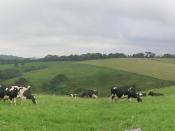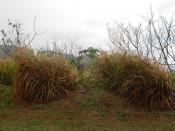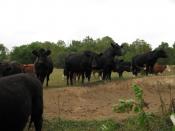Dairy Cow Management
Maintaining an effective animal health program is an essential part of a successful dairy herd. Good feeding and breeding may not pay off if cattle are not kept in good health to get maximum production. Studies show that two out of three cows are culled from dairy herds for reasons other than low production.
Losses in a 40 cow herd can amount to hundreds or even thousands of dollars each year. Economic losses occur because of lost milk production, poor animal gains, animal disease or injury, lost genetic capability, treatment cost, and extra labor.
There are many diseases and health problems associated with dairy animals. Some of the major diseases are effect breeding. Long calving intervals resulting in low herd production is a problem due to many breeding diseases. Also too many cows with an infected uterus. Veterinarian checks before breeding and post breeding are suggested to limit these types of problems.
Mastitis is the infection of the mammary gland. Swollen and painful udder, produce only flakey milk and, in little milk production each milking.
Other diseases that can arise from lack of management is bloat, hardware, twisted stomach, and foot rot. Bloat is a condition in cattle when their rumen fills with an excess amount of gas and they are able to release it. Hardware can affect cattle due to the poor conditions of the pasture. Objects ingested they may become stuck in the stomach is hardware. Foot rot is a bacterial infection that slowly rots the foot away and cause the cow to become very sick. All of these can be resulting from lack there of management. Unclean facilities or improper feeding can cause these things.
Since each herd is a different situation, each owner must make his or her own herd health plan.


